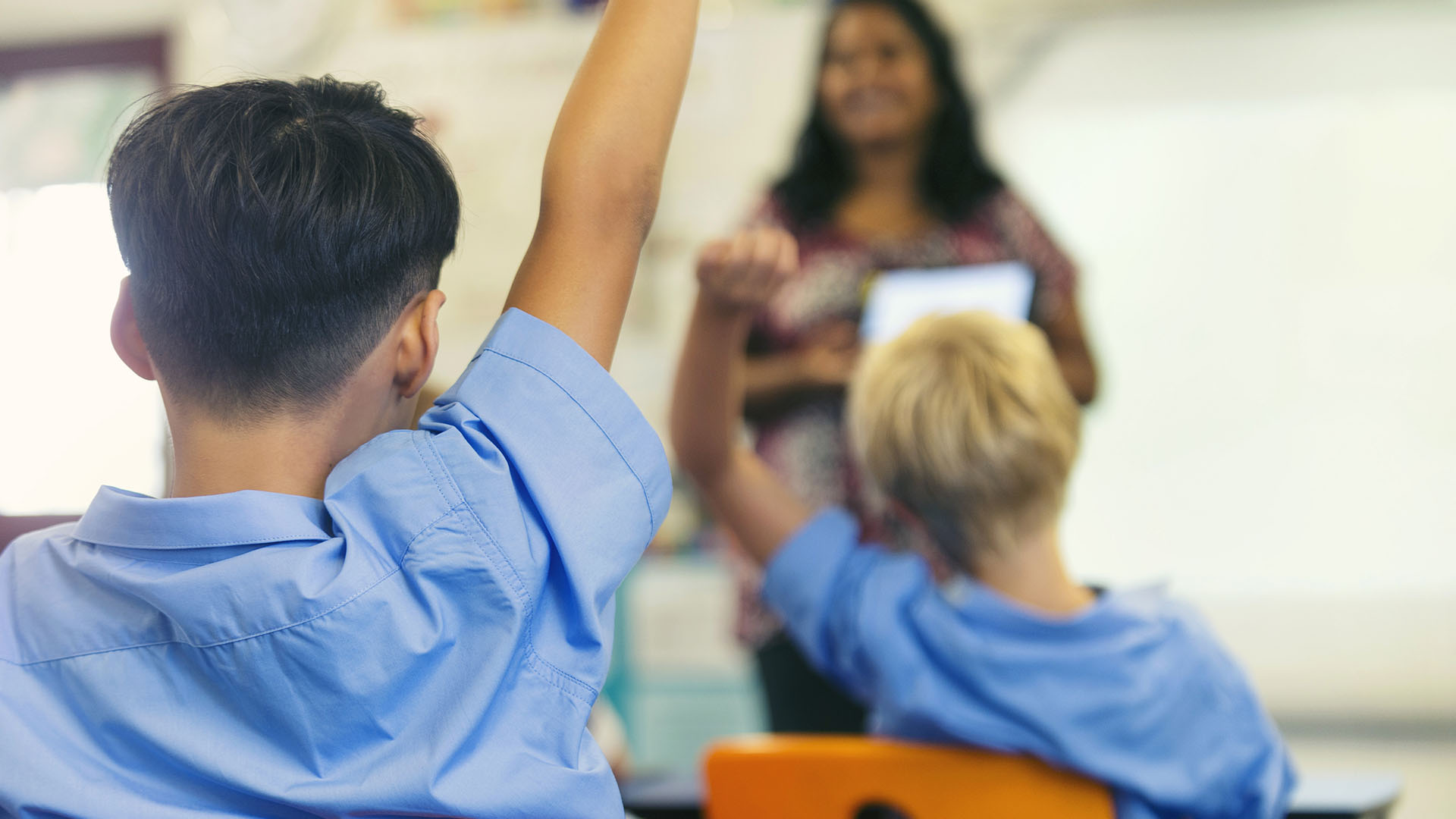
As a father of two school-age children, I worry about their mental health. After all, the last several years haven’t been easy on America’s kids. Depression, anxiety and other mental health issues were already impacting young people quite heavily before COVID, with more than one-third (37%) of high school students reporting persistent feelings of sadness and hopelessness, an increase of 40% from 2009 to 2019.
The pandemic further eroded the mental wellbeing of youth. In particular, the lockdowns had a significant negative impact on students as they were isolated from their friends and classmates. Living an insular existence with only their parents and siblings physically in their lives, many young people relied on social media, including Discord and other chat room/web platforms, along with multiplayer games such as Minecraft and Fortnite. Sadly, the result was a decline in mental health, with more than one-third (37%) of high school students experiencing poor mental health during the COVID-19 pandemic.
October is the month we turn our attention to mental health, with World Mental Health Day on the 10th, Mental Illness Awareness Week from the 2nd to the 8th and National Depression Screening Day on the 7th. As we focus on matters of the mind, I’d like to take this opportunity to discuss the mental health challenges facing our nation’s youth.
Generation in a mental health crisis
When I speak to friends with children similar in age to my own, they echo my concerns. We’re not alone in feeling this way. According to a poll by the American Psychiatric Association (APA), more than half (53%) of U.S. parents express concern about their children’s mental wellbeing.
The data proves parents are right to be worried:
- Half of all mental illnesses begin by the age of 14.
- Almost one in five adolescents report having depression.
- Nearly 10% of teens and tweens experience anxiety so debilitating it interferes with their everyday functioning.
- From 2007 through 2021, suicide rates among young people ages 10 to 24 increased by 62%.
- Nearly one-third of teen girls admit they seriously considered suicide in 2021, a 60% increase since 2011.

The youth mental health crisis is even more pronounced among LGBTQ+ students, female students and students across racial and ethnic groups. Nearly half (45%) of LGBTQ+ students seriously considered suicide in 2021, and Black students were more likely to attempt suicide than students of other races and ethnicities.
The youth mental health situation is so grim that in October 2021, the American Academy of Pediatrics, American Academy of Child and Adolescent Psychiatry and Children’s Hospital Association declared a National State of Emergency in Children’s and Adolescent Mental Health.
The dangers of social media to mental health
Increasingly, parents, educators and mental health experts are raising the red flag about social media usage among young people. According to an advisory issued by the Office of the U.S. Surgeon General, social media use is nearly universal, with up to 95% of teenagers and 40% of children age eight to 12 on various platforms.
On a typical weekday, nearly one-in-three adolescents report using screens – most commonly, social media – until midnight or later. Alarmingly, one-third of girls aged 11 to 15 say they feel “addicted” to certain social media platforms and over half of teens say it would be difficult for them to give up social media.
The verdict is still out as it pertains to the detrimental effects of social media on young brains, but it clearly exposes children and adolescents to content that presents risk of harm.
- Social media may perpetuate body dissatisfaction, disordered eating behaviors, social comparison and low self-esteem, especially among adolescent girls.
- When asked about the impact of social media on their body image: 46% of adolescents aged 13-17 said social media makes them feel worse, 40% said it makes them feel neither better nor worse and only 14% said it makes them feel better.

- Roughly two-thirds (64%) of adolescents are “often” or “sometimes” exposed to hate-based content.
- Some social media platforms show suicide- and self-harm-related content including even live depictions of self-harm acts, content that, in certain tragic cases, has been linked to childhood deaths.
Studies have shown that young people who spend more than three hours a day on social media face double the risk of poor mental health including experiencing symptoms of depression and anxiety. This is deeply concerning in light of another survey that found teenagers spend an average of 3.5 hours a day on social media.
Concerns about the negative impacts of social media on youth mental health have reached the highest levels of U.S. government. Just this past spring, President Joe Biden and Vice President Kamala Harris announced a number of actions to protect youth mental health, safety and privacy online, while calling on Congress to pass legislation that would strengthen such protections.
Where the gaps are for youth
Clearly, our youth are struggling, yet more than 60% of children with depression don't get any mental health treatment and 80% of children and adolescents will not receive the specialized mental healthcare they need. In an attempt to self-soothe, some have even taken to buying medicine online. This practice is dangerous in and of itself – and potentially tragic when such pills are laced with deadly levels of fentanyl and other lethal drugs.
So, why aren’t America’s youth getting the mental healthcare they so badly need? A large portion of the blame lies with the health delivery system. There just simply aren’t enough providers. Healthcare workers were already burned out and the pandemic only served to exacerbate the problem, leading many to leave the profession.
of children and adolescents will not receive the specialized mental healthcare they need.
Telehealth has been somewhat effective in filling the gap, but primarily for adults. During the 2021-2022 school year, less than one-in-five (17%) schools offered mental health services through telehealth.
That’s not to suggest schools haven’t stepped up to help their students. On the contrary, 96% of public schools offer at least one type of mental health service to their students. The most frequently offered services are:
- Individual-based interventions like one-on-one counseling or therapy (84%)
- Case management or coordinating mental health services (70%)
- Referrals for care outside of the school (66%)
Just over half (56 percent) of public schools moderately or strongly agree they could effectively provide mental health services to all students in need, according to data from the National Center for Education Statistics (NCES) within the U.S. Department of Education's Institute of Education Sciences (IES). Seventy percent report an increase in the percentage of their students seeking mental health services at school and three-quarters (76 percent) of schools report an increase in staff voicing concerns about their students exhibiting symptoms such as depression, anxiety and trauma.
Students need our support now more than ever, whether by making sure their schools are inclusive and safe or by providing opportunities to engage in their communities and be mentored by supportive adults.
Director of CDC’s Division of Adolescent and School Health
Among about half of those schools that do not believe they can effectively provide mental health services to students in need, the most reported limitations involve mental health provider shortages – 61% cite insufficient staff coverage and 57% cite a lack of access to providers. In addition, many schools do not meet recommended ratios for psychologists to students (500:1) or counselors to students (250:1). Going into the 2022-2023 school year, 19% of public schools had vacancies for mental health professionals. Among schools with these vacancies, 84% say it will be somewhat or very difficult to fill these mental health positions.
Turning to technology: a silver lining?
In recent years, we’ve seen the emergence of numerous digital solutions that teach important skills through avenues that are familiar and comfortable for young people. Here are some of those promising innovations:
For all the concerns about social media, it’s actually technology that may hold the key to the youth mental health crisis. After all, Gen Z is considered to be largely tech natives and embracing all things digital.
- One particular platform, Mightier, has been clinically validated to support kids ages six to 14 with anxiety, attention-deficit/hyperactivity disorder (ADHD), anger, autism, outbursts and oppositional defiant disorder (ODD). Through the power of play – and a Bluetooth heartrate sensor – children learn and practice evidence-based calming skills, such as progressive muscle relaxation, deep breathing and mindful tracing. A parent app provides insights into each child’s progress and includes articles and resources to support their development.
- Designed for teens and tweens, Take-Pause uses mindfulness-based virtual reality to reduce anxiety and pain. This fast-acting, easy-to-use calming tool has been clinically proven to provide near-immediate results in emergency rooms, urgent care settings and inpatient environments. As a result of this technology, anxiety levels decreased, and some observational data suggests a reduction in the need for pain and sedative medications.
- The first ever FDA-approved video game treatment for kids age eight to 12 with ADHD, EndeavorRx uses sensory stimuli and motor challenges to target areas of the brain that play a key role in attention function. Parents can follow their child’s treatment with the EndeavorRx Insight app to track daily efforts and level completion.
- Meanwhile, chatbots, like Wobebot and Wysa, create safe spaces for adolescents to work through worries and stressors, bypassing the stigma surrounding mental health. They meet teens on their terms in their moment of need, providing critical intervention before they reach the crisis point.

They’ve been focused on behavioral health for years, yet the majority of the solutions have been developed for adults. With the increased awareness and availability of solutions for youth, there is a vast opportunity for employers to provide supports to kids, teens and their families.
Here's what benefits leaders can do to assess mental health needs and respond within their own populations:
- Understand your data, if possible, looking at the utilization of mental health services in medical claims.
- Work with the carrier to ensure there is network adequacy for pediatric coverage.
- Investigate pediatric solutions being developed and consider offering them as part of a benefit plan or voluntary benefit.
- Look toward healthcare navigation solutions with behavioral navigation that can help identify services and solutions and help close social determinants of health that can compound the issue.
In closing, I’d like to remind benefits leaders that Alight can help support workforce mental health by breaking down the emotional and structural barriers employees and families most often face in accessing the right care.
With Alight Behavioral Health Guidance, participants are able to:
- Access a single, safe place for help, either live or digitally. We offer participants a completely confidential, nonjudgmental space to ask questions, be vulnerable, talk about symptoms and understand the options available for help.
- Work with a dedicated Behavioral Health Ally for ongoing, personalized support. This registered nurse can screen for anxiety and depression, plus educate on different treatment options, medications and provider types that make sense for their needs.
- Receive support from Alight’s multidisciplinary Behavioral Health Ally team, when needed. This team is highly experienced in all conditions and includes psychiatrists all the way through licensed social workers to wrap participants in support— including populations with unique needs, like pediatrics, LGBTQ+, the elderly and veterans.
- Find high-quality, in-network providers and facilities for treatment. Our team can also confirm a provider’s availability and surface virtual options, speeding access to care.
- Get advanced, longitudinal support for complex or severe behavioral health needs. This includes admissions support for inpatient residential treatment or rehabilitation, transitions in care settings and deeper partner collaboration across the health plan, EAP and other vendor partners.